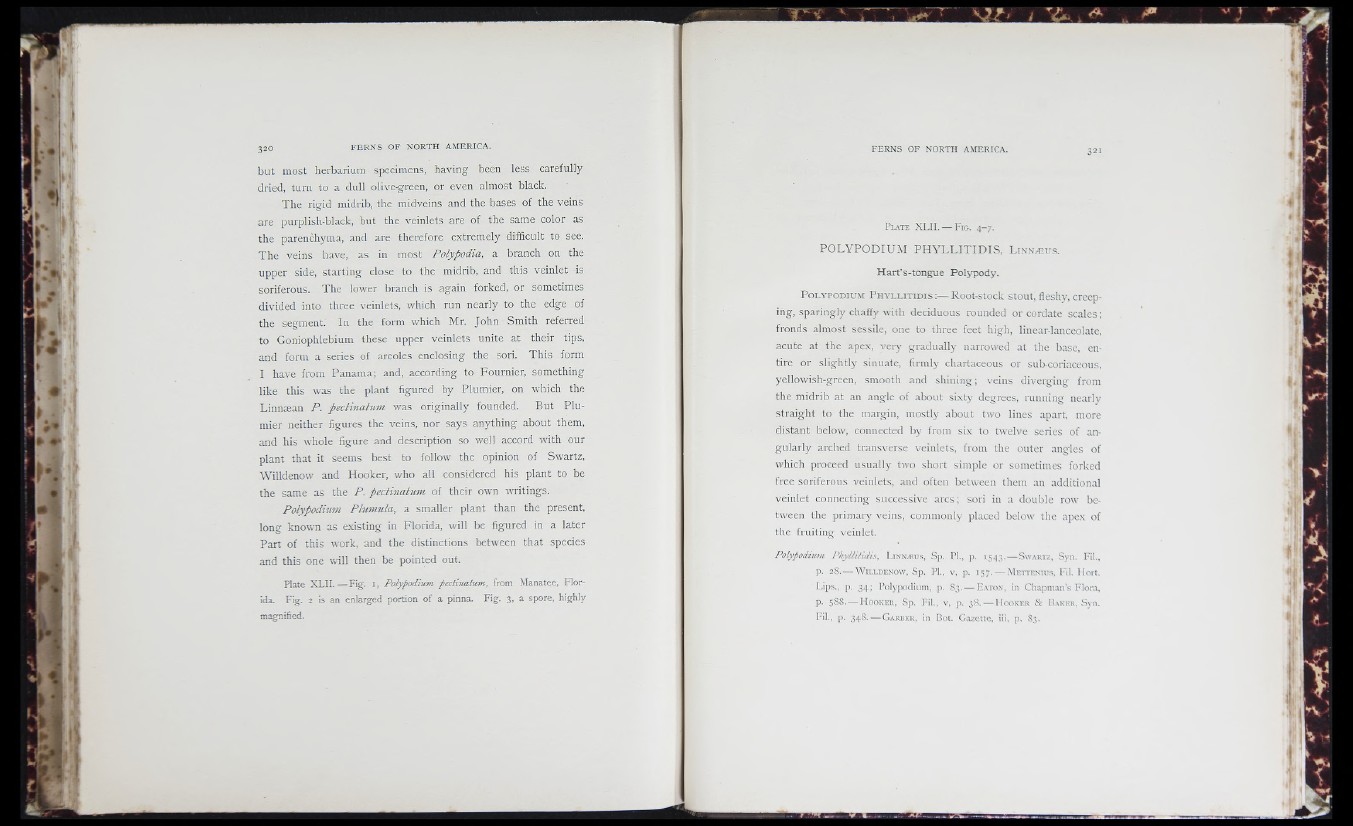
I '
i r '
JI h '
r #
•
# «
I s #
I
but most herbarium specimens, having been iess carefuiiy
dried, turn to a duii oiive-green, or even aimost biack.
The rigid midrib, the midveins and the bases of the veins
are purpiish-biack, but the veiniets are of the same coior as
the parenchyma, and are therefore extremeiy difficuit to see.
The veins have, as in most Polypodia, a branch on the
upper side, starting ciose to the midrib, and this vciniet is
soriferous. The lower branch is again forked, or sometimes
divided into three veinlets, which run nearly to the edge of
the segment. In the form which Mr. John Smith referred
to Goniophlebium these upper veinlets unite at their tips,
and form a series of areoles enclosing the sori. This form
I have from Panama; and, according to Fournier, something
like this was the plant figured by Plumier, on which the
Linnman P. pectinatum, was originally founded. But Plumier
neither figures the veins, nor says anything about them,
and his whole figure and description so well accord with our
plant that it seems best to follow the opinion of Swartz,
Willdenow and Hooker, who all considered his plant to be
the same as the P. pectinatnm of their own writings.
Polypodhim Phimula, a smaller plant than the present,
long known as existing in Florida, will be figured in a later
Part of this work, and the distinctions between that species
and this one will then be pointed out.
Plate X L II.—Fig. i, Polypodium pectinatum, from Manatee, Florida.
Fig. 2 is an enlarged portion of a pinna. Fig. 3, a .spore, highly
magnified.
Paste X L I I. — F ig . 4-7.
POLY PO DIUM P H Y L L IT ID IS , LiNXAiirs.
Hart’s-tongue Polypody.
P o l y p o d iu m P h y l l i t i d i s :— Root-stock stout, fleshy, creeping,
sparingly chaffy with deciduous rounded or cordate scales;
fronds almost sessile, one to three feet high, linear-lanceolate,
acute at the apex, very gradually narrowed at the base, entire
or slightly sinuate, firmly chartaceous or sub-coriaccous,
yellowish-grecii, smootli and shining; veins diverging from
the midrib at an angle of about sixty degrees, running nearly
straight to the margin, mostly about two lines apart, more
distant below, connected by from six to twelve scries of angularly
arched transverse veinlets, from the outer angles of
which proceed usually two short simple or sometimes forked
free soriferous veinlets, and often between llicm an additional
vciniet connecting successive arcs; sori in a double row between
the primary veins, commonly placed below the apex of
the fruiting veinlet.
Polypodium Phyllitidh, Linnw.u.s, Sp. Pi., p. 1543. — Suwrtz, Syn. l-'i]..
p. 28. — Wn.uiENOw, Sp. PI., V, p. 157. — METTExrns, Fil. I lore
Lip.s., p. 34; Polypodium, p. S3. — F.\tox, in Chapman’s Idora,
p. 58s. — H o o k e r , Sp. Fit, v, p. 38. — H o o k e r & P . i k e r . Syn.
Inl., l>. 348.—G a r r e r , in Hot. tiaznuc, iii. p. 83.